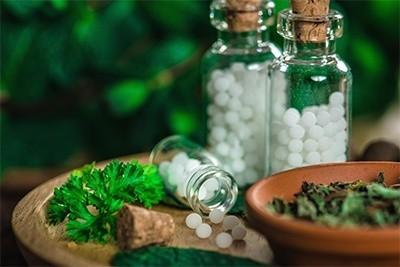Liver Disorders and Ayurvedic Management
Liver Disorders and Ayurveda

Liver disorders and diseases appear to be on the increase.
Part of the increase in liver diseases is due to our frequent contact with chemicals and other environmental pollutants. In addition to this, the amount of medicine consumed has increased greatly resulting in dangers to the liver.
While those who smoke, abuse alcohol and drugs and live in severely polluted environments are at greatest risk, we all suffer some threat of damage or disease to the liver.
The liver is the detoxifying factory in the body and it has now become an increasingly overworked organ. Besides excessive intake of alcohol, the bulk of cirrhosis cases are caused by fatty liver and Hepatitis B and Hepatitis C infections.
Owing to its many roles, the liver impacts normal human growth and development, fertility, cardiovascular maintenance, and bone integrity. The maintenance of a healthy liver, therefore is vital to overall health and well being.
Ayurveda gives emphasis to the health of liver as it is the major organ controlling physical and mental aspects of Pitha humor.
Summary of Major Liver Functions
1. Carbohydrate Metabolism
Produces and stores glycogen (glycogenesis), produces glucose from liver glycogen and other molecules (gluconeogenesis) and releases it into the blood.
2. Lipid Metabolism
Oxidises fatty acids for energy production, synthesizes cholesterol, phospholipids and bile salts and excretes cholesterol in bile.
3. Protein Metabolism
Breaking down of amino acids and produces urea, albumin, plasma transport proteins and clotting factors.
4. Formation and Storage of Vitamins and Minerals
Forms the intermediate product in the synthesis of active vitamin D hormone. Stores iron as ferritin, and stores large amounts of vitamins A, D, and B12, and smaller amounts of other B-complex vitamins and vitamin K.
5. Detoxification of Blood
The liver processes and protects us from the many sources of toxins that we encounter daily. Prescribed and over-the-counter drugs also take their toll on the liver as do the cocktail of chemicals used in the growing, preserving and packaging of food. It also protects us from the toxins we are exposed to in our environment such as pollution, viruses, bacteria, household sprays and industrial chemicals.
The liver also processes the toxic wastes that our body produces as part of metabolism and growth. This includes the synthesis of urea, a waste product of protein metabolism, which the liver releases into the blood where it is transported to the kidneys for elimination. It is responsible for destruction of old red blood cells, eliminating and recycling their break down products. It also manufactures new blood plasma proteins including the clotting factors that stop us bleeding.
Liver Disorder Symptoms
- Yellow discoloration of the skin and eye
- Dark urine
- Grey, yellow, or light-colored stools
- Nausea, vomiting and/or loss of appetite
- Vomiting of blood
- Prolonged generalized itching
- Unusual change of weight
- Abdominal pain
- Sleep disturbances
- Mental confusion
Liver dysfunction is observed in the following clinical conditions Hepatitis
The most common disease that can affect the liver is ‘viral hepatitis’ (inflammation of liver caused by viral infection). Hepatitis can be caused by drugs, viruses, bacteria, mushrooms and parasite like amoebas. The most common hepatitis viruses affecting the liver are named for letters of the alphabet: hepatitis A, hepatitis B, hepatitis C, hepatitis D and hepatitis E.
But with Hepatitis B virus and Hepatitis C virus, many people will go into a chronic phase that leads to cirrhosis.
Cirrhosis of the liver
Cirrhosis of the liver is a chronic, diffuse degenerative liver disease in which the parenchyma or functional organ tissue degenerates. There is a loss of liver cell function, and an increased resistance to blood flow through the damaged liver tissue which results in a condition known as portal hypertension.
Severe cirrhosis leads to ammonia toxicity, hepatic coma, gastrointestinal hemorrhage, and kidney failure. As liver cells are destroyed, they are systematically replaced by scar tissue.
The most common cause of cirrhosis is believed to be alcohol abuse. Though it affects many organs, alcohol is especially harmful to the liver, and is a factor in about three-fourths of the cases of liver cirrhosis.
Alcohol must be metabolized, and the liver performs most of that job, suffering serious damage in the process. Not only does alcohol destroy liver cells, it also robs them of their ability to regenerate. Such cofactors as hepatitis C virus can increase the risk of cirrhosis. By Ayurvedic medicines and treatment procedures it is possible to stop different processes which leads to cirrhosis and cancer of the liver
Even though it is not possible to make all Hepatitis A , Hepatitis C patients negative , still we are able to protect them from cirrhosis of the liver, in which the liver stops functioning, and liver cancer.
Ayurvedic Approach to Liver Dysfunction
Ayurveda believes that when the liver is unable to perform well, it also leads to imbalance or distortion in all the three doshas or humors of the body viz. Vatha , Pitha and Kapha.
This vitiation of imbalance in the natural working of liver along with the three doshas ultimately results in formation of liver diseases. Pitha-based problems of skin inflammation can be a direct result of liver imbalance.
The liver is one of the main site of Agni or fire principle. Liver hosts bhuthagni which are the subtle enzymes that digest the five elements in our food into forms that directly nourish our five sense organs (eyes, ears, nose, mouth, skin).
Effective transformation of one dhathu to next is caused by the seven dhatwagnis.
Concept of Dhatu
Dhatu – Seven types of body tissues which forms physical body. They are
- Rasa – Purified subtle part of properly digested food
- Rakta – Blood
- Mamsa – Flesh
- Medas – Fat
- Asthi – Bone
- Majja – Bone marrow
- Sukla/Arthava – Reproductive tissue
Each of these dhatus are subtler or purer than the previous dhatu and nourished by the same. For example fat (medas) is nourished by flesh (mamsa) and flesh (mamsa) by blood (raktha). The dhatwagni or fire inherent in fat cause digestion and supply of nutrient or subtler part of fat to the subsequent bone (asthi) dhatu.
If their ‘flame’ burns too high, or when too low, or burns unevenly, then transformation and nourishment of each dhatus get impaired leading to diseases and toxins are produced and liberated in to blood.
Toxins building up in the liver can also result in allergies, high cholesterol, hypoglycemia, constipation, digestive problems and fatigue. If the imbalance continues for a long time, serious diseases of the liver can develop, including hepatitis, cirrhosis, jaundice and cancer.
The imbalance of one, two or all three ‘doshas’ have individual effects on liver with varied symptoms. The disturbed ‘Vatha or Kapha doshas’ along with ‘Pitha’ disturb its secretions and normal functioning, resulting in its failure to perform its normal duties.
The decreased secretion of ‘Pitha’ causes cooling sensations in the body and symptoms like anorexia; dyspepsia; loss of face-luster; generalized pains; indigestion; shivering; heaviness; loss of vision, body fire, appetite and thirst.
Its increase causes burning sensations in the body and symptoms like insomnia; vertigo; fainting; paleness of eyes, face, skin and urine; whitening of stools and increased thirst and anger.
The liver being a main site of Pitha, controls emotions. Dysfunction or increase of Pitha can therefore also be expressed as anger, irritability and jealousy. Alternatively a healthy liver and balanced Pitha dosha can inspire courage, confidence, willpower and drive.
Suppression of emotions such as jealousy and rage is as potentially toxic as harmful chemicals and finding appropriate methods of expressing and understanding the source of these emotions will support proper liver function.
Liver Disease Treatment Procedures
- Since Pitha dosha is affected more, virechana is the most beneficial treatment procedure here
- Virechana or mild to moderate purgatives
- Utilizing ideal herbs
Other purification procedures are used whenever required. For example Nasya or Nasal administration of medicines is successfully used in severe conditions of hepatitis.
After such purification procedures different formulations containing below mentioned herbs are used.
Do’s and Don’ts
Do’s
- Legumes – such as beans, peas, soybeans, contain the necessary amino acid arginine in the detoxification of ammonia, the waste product of protein digestion
- Turmeric – Cooking spice contains curcumin which has traditionally been used as a remedy for liver disorders
- Onions – Contain sulfur which helped sweep the various toxic substances such as chemical drugs, alcohol, pesticides, and other environmental pollutants
- Get more exercise – Preferably resistance exercises have been proven to help improve a fatty liver
- Eat raw vegetables – These are high in fibre and vitamins and in general will help you lose weight especially if you can substitute your favourite sweet thing for a raw vegetable
- Drink more water – Drinking sufficient water will help the liver and kidneys do their thing a lot easier
Don’ts
- Avoid dairy products. Cheese, milk and yoghurt
- Cut down the amount of red meat as this is harmful for your liver
- Don’t smoke, avoid pharmacy drugs. The liver has to filter out the toxins left by these and by reducing its work load it will have more resources to heal itself
- Avoid breathing in toxic fumes from cleaning products, paint or solvents because this can damage the liver. If you want to paint walls, for example, open windows, turn on fans and wear a mask. Always use gentle cleaning products.
AYUR CLINIC Services – Indian Natural Therapies | Liver Cleansing Melbourne Clinic
Ayurveda Homeopathy Yoga Meditation
Working with you to achieve health and wellbeing.
Call +61 3 9078 2940 to book an appointment or contact us for more information.
When the liver is unable to perform well, it also leads to imbalance or distortion in all the three doshas: Vatha , Pitha and Kapha.
Book an Appointment











Useful Links
- Disclaimer
In any means, we, AYUR CLINIC team neither claiming to be a modern medical doctor nor we registered in the Australian medical board. The word doctor used here is only to represent or to refer the Ayurveda doctors recognized in India after achieving a Bachelor of ayurvedic medicine and surgery qualification. This qualification is recognized in Australia as a naturopath by Vetassess governing body. The information provided on this website is designed to provide helpful information on the ayurvedic subjects discussed. Information on this website should not be considered as a replacement for advice and consultation from a healthcare expert. This content or information is not meant to be used, nor should it be used, to diagnose or treat any ayurvedic condition. For treatment or diagnosis of any ayurvedic condition or difficulties, consult a doctor. The publisher and creator are not responsible for any specific health or allergy needs that may require ayurvedic supervision and are not liable for any damages or negative consequences from any treatment, application or use, to any person reading or following the data or information in this website. References are provided for informational purposes only. Readers should be aware that the linked websites listed on this website may change. This site does not recommend or support the self-management of health issues using the information provided on the website. Instead, we insist you to consult with a qualified Ayurvedic doctor for guidance. Information on this site is not comprehensive and does not cover all physical conditions, illnesses, weaknesses or their treatment. Contact your healthcare professional promptly if you have any health-related questions. Never neglect or delay ayurvedic advice based upon the information you may have read on this site.
© AYUR CLINIC Ayurveda Melbourne | All Rights Reserved 2018 – 2023.
© AYUR CLINIC Ayurveda Melbourne | All Rights Reserved 2018 – 2023.







